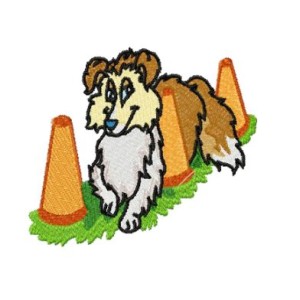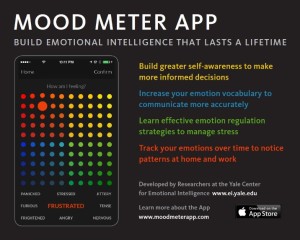I’ve recently started teaching the soft-skills course “Team Dynamics from a Project Manager’s Perspective” for DFCI Project University. In the course we explore the topic of emotional intelligence, which is our ability to understand our mood, and how it affects ourselves and others – including teammates – around us. We explore this topic in part from its impact on the winningest sports team in history, to its impact on a project team’s potential for success in the workplace.
The model of Emotional Intelligence was first published by Yale and UNH researchers in 1990, gaining broader visibility outside of the academic sphere with the 1995 book Emotional Intelligence by Daniel Goleman. In 2014, Marc Brackett Ph.D., Director of the Yale University Center for Emotional Intelligence, co-developed the Mood Meter mobile app so you can devise on-demand greater insight into how you’re feeling and strategize how to change how you’re feeling.
The vertical axis denotes one’s energy level and runs from -5 to +5. I’d call -5 comatose and +5 jumping out of my skin from too much espresso. The horizontal axis denotes one’s level of pleasantness. -5 is downright nasty and +5 is so nice you’re probably hugging everyone right now. -5/-5 is not so good!
During the time I was developing the DFCI course, my 2 year old Shetland Sheepdog, Finn, and I enrolled in Canine Agility Training down on the Cape. It was that or sheep herding. We don’t have sheep. Who knew there would be content intersection with the DFCI soft-skills course? By week 8 we were counseled on our energy levels.
No, it’s not Finn. It’s me. The human.
 I thought we were doing great, we were having fun. We were having too much fun. Our Westminster-winning instructor Lori explained, “One of you needs to be the ‘plus’ to the other’s ‘minus’. “ Huh?
I thought we were doing great, we were having fun. We were having too much fun. Our Westminster-winning instructor Lori explained, “One of you needs to be the ‘plus’ to the other’s ‘minus’. “ Huh?
Both of us could not be in the Mood Meter “red zone” and train or compete very successfully, too much energy. Finn was already super-excited, tail raised high, yipping gleefully in anticipation of his turn to literally jump through hoops. I’d have sworn he was cheering other dogs’ accomplishments while waiting in the queue, that’s how excited he was. As the young Doberman ran off course to steal some not-yet-sold sold training treats, I pictured Finn parading around with his 16” class purple and gold ribbon. Ah, someday…
But first, one of us had some toning down to master (not to mention months and months more of obedience and agility course training). I needed to find my “blue zone,” the state of mind that has helped teams like the New Zealand All Blacks rugby team stay in winning form. Not too energetic and not too unpleasant.
Thinking about Lori’s advice in context of Yale’s work on the emotional intelligence mobile application, if I click on my iPhone’s Mood Meter and select the top-right most blue dot, words like “calm” and “at-ease” are selectable. In contrast and characterizing Finn’s mood, clicking on the red dot just below the top right-most red dot, words like “hyper” and “energized” appear. Yes, that sounds like Finn on the course. Matching calm and at-ease with hyper and energized now makes sense. Plus and minus.

